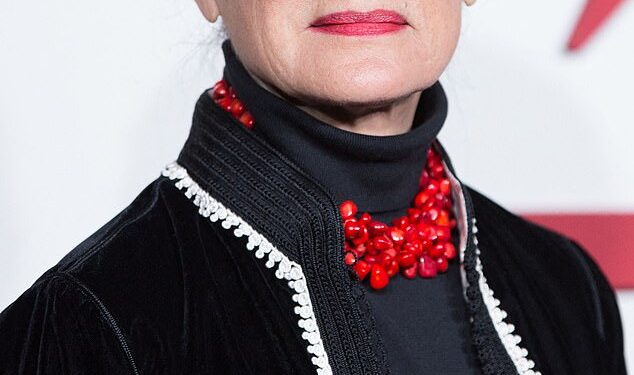Pablo Picasso’s daughter said her father is ‘uncancellable’ despite a long history of ‘womanising’ and allegations of stealing from African culture.
In a new interview with The Telegraph, Paloma Picassso, 75, who is the only surviving child of the influential artist, insisted that her father cannot be cancelled, despite some criticisms made of him now.
Paloma, who is a jewellery designer and businesswoman, spoke fondly of her late father, despite their fraught relationship which left them estranged at the time of his death in 1973.
Since Picasso’s death, there has been mounting criticism directed towards the artist, who was famously fond of women and was thought to have a particular interest in younger women.
Though critics have questioned whether Picasso was ‘toxic’ after his treatment of women was labelled akin to misogyny, Paloma vehemently defended him.

Pablo Picasso’s daughter said her father is ‘uncancellable’ despite a long history of ‘womanising’ and allegations of stealing from African culture
Recalling his relationship with the French model Marie-Thérèse Walter, who was just 17 when she embarked on an affair with the 45-year-old married artist, Paloma said ’17 is not that under age’.
Discussing whether or not she thought the cultural landscape would be ‘bleak’ if artist’s private lives were overly interrogated, Paloma answered: ‘Yes! Marie-Thérèse [Walter] was 17, it’s true, but she was an exception.’
‘It’s not that he was only with women who were under age. And 17 is not that under age.’
The model was just 17 when she met Picasso in 1927 and became his lover for eight years. Marie-Thérèse was also the mother of the artist’s second eldest child, the late Maya Widmaier-Picasso.
Paloma also said that the putting the blame on men was ‘a bit tough’ and that her father was a man of his generation – Picasso having been born in 1881.
Paloma also acknowledged that her father loved women and made sure they were the centre of his attention during his life.
Born in 1949, Paloma is the daughter of Picasso and the French artist Françoise Gilot, who is described as ‘the only woman who walked out’ on the Spaniard.
She is the last surviving child of the influential painter, who had a total of four children, Paulo Picasso, Maya Widmaier-Picasso and Claude Picasso, with three different women.
![Discussing whether or not she thought the cultural landscape would be 'bleak' if artist's private lives were overly interrogated, Paloma answered: 'Yes! Marie-Thérèse [Walter] was 17, it¿s true, but she was an exception'](https://i.dailymail.co.uk/1s/2024/10/16/14/90921491-13966105-image-a-17_1729085677324.jpg)
Discussing whether or not she thought the cultural landscape would be ‘bleak’ if artist’s private lives were overly interrogated, Paloma answered: ‘Yes! Marie-Thérèse [Walter] was 17, it’s true, but she was an exception’

Picasso pictured with his wife Françoise in 1951. The jewellery designer also said that the putting the blame on men was ‘a bit tough’ and that her father was a man of his generation – Picasso having been born in 1881

Paloma Picasso pictured besides her fathers work in 2023

But since her father died, Paloma has been defending his legacy against critics who argue the influential artist is ‘sexist’
Paloma’s mother Françoise left Picasso in 1953, taking with her their two children, Paloma, who was four, and Claude who was six.
Despite the schism in the family, Paloma said she maintained a positive relationship with her father, who would come to visit them in Paris.
The artist cut off Paloma and her full sibling, Claude, after their mother wrote a book titled Life with Picasso, before his death in 1964.
Paloma began designing jewellery when she was just a teenager and has previously appeared on the face of Vogue.
On top of her familial connections to Picasso, Paloma has mingled with artists her whole life, having been the muse to Andy Warhol and Yves Saint Laurent when she was in her 20s.
The 75-year-old now divides her time between Lausanne, Paris, Marrakesh and New York.
But since her father died, Paloma has been defending his legacy against critics who argue the influential artist is ‘sexist’.
On the 50th anniversary of his death last year, The Guardian asked ‘Is it time to mothball the master?’
One of Pablo’s most famous works, the Demoiselles d’Avignon is an iconoclastic Cubist study of five naked prostitutes from a Barcelona brothel.
It is now thought that while working on the painting, the artist and his longtime mistress Fernande Olivier, briefly adopted a 13-year-old girl named Raymonde from a Paris orphanage – Picasso ended up he sketching with her legs spread.
‘There’s no indication that Picasso ever abused Raymonde [who was later returned to the orphanage],’ wrote the artist’s biographer Miles Unger, ‘but it’s clear she aroused feelings in him that might have led to disaster. His attraction to adolescent girls, at least later in life, is well-documented.’







